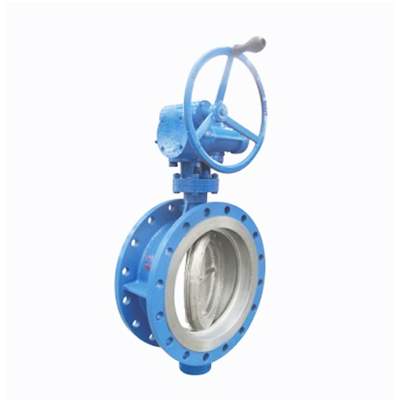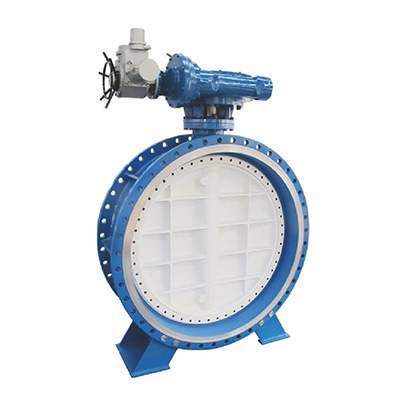Introduction

Copper butterfly valves have emerged as a preferred choice in numerous industrial and residential applications due to their exceptional properties and benefits. These valves, renowned for their simple design and reliable performance, offer a range of advantages that make them a compelling option for various fluid control systems. In this comprehensive guide, we will delve into the reasons why copper butterfly valves should be considered for your specific application, exploring their unique characteristics and the advantages they offer over other valve types.
Understanding Copper Butterfly Valves
A copper butterfly valve is a type of quarter-turn valve that utilizes a disc-shaped element to regulate the flow of fluid. The disc, or butterfly, rotates on a stem to open or close the valve, providing a simple and efficient means of controlling fluid flow. Copper is a popular choice for the primary material of these valves due to its exceptional corrosion resistance, high thermal conductivity, and natural antimicrobial properties.
Benefits of Copper Butterfly Valves
- Corrosion Resistance: Copper’s inherent resistance to corrosion makes it an ideal material for applications involving corrosive fluids and environments. This property ensures the longevity and reliability of copper butterfly valves, even in harsh conditions.
- Durability: Copper valves are known for their durability and longevity, providing reliable service for many years. The combination of copper’s strength and corrosion resistance contributes to their long-lasting performance.
- Thermal Conductivity: Copper’s excellent thermal conductivity allows for efficient heat transfer, making it suitable for applications where temperature control is critical. This property is particularly valuable in industries such as HVAC and chemical processing.
- Antimicrobial Properties: Copper possesses natural antimicrobial properties that can inhibit the growth of bacteria and other microorganisms. This characteristic is especially beneficial in applications where hygiene and safety are paramount, such as in the food and beverage industry.
- Lightweight: Copper valves are relatively lightweight compared to valves made from other materials, making them easier to install and handle. This can reduce labor costs and simplify the installation process.
Applications of Copper Butterfly Valves
Copper butterfly valves find applications in a wide range of industries, including:
- Water Treatment: Used for controlling the flow of treated water and chemicals in water treatment plants.
- HVAC Systems: Employed in heating, ventilation, and air conditioning systems to regulate airflow and maintain optimal temperature control.
- Food and Beverage: Used in food processing and beverage production due to their corrosion resistance and antimicrobial properties, ensuring the safety and quality of products.
- Marine Applications: Suitable for seawater applications due to copper’s resistance to corrosion, making them ideal for use in marine environments.
- Chemical Processing: Used in chemical processing plants to handle various corrosive fluids, providing reliable and safe control of chemical processes.
Factors to Consider When Choosing a Copper Butterfly Valve
When selecting a copper butterfly valve, several factors should be carefully considered to ensure the best fit for your specific application:
- Valve Size: The size of the valve must match the pipe size and flow rate requirements to ensure optimal performance and avoid restrictions.
- Pressure Rating: The valve must be rated for the maximum operating pressure of the system to prevent leaks and ensure safe operation.
- Temperature Range: The valve should be able to withstand the expected temperature fluctuations within your application to maintain its structural integrity and functionality.
- End Connections: The type of end connections (e.g., threaded, flanged) must be compatible with the piping system to ensure a secure and leak-free installation.
- Material Compatibility: Ensure that the copper alloy used in the valve is compatible with the fluid being handled to prevent corrosion and ensure the valve’s longevity.
Copper Alloy Options
While pure copper is commonly used for butterfly valves, various copper alloys are also available to enhance specific properties and meet the requirements of different applications. Some common copper alloys include:
- Brass: Offers good corrosion resistance and machinability, making it a versatile choice for many applications.
- Bronze: Provides increased strength and wear resistance, making it suitable for more demanding environments.
- Copper Nickel: Offers excellent corrosion resistance in seawater environments, making it a popular choice for marine applications.
Comparison of Copper Butterfly Valves with Other Materials
| Material | Advantages | Disadvantages |
|---|---|---|
| Copper | Excellent corrosion resistance, high thermal conductivity, antimicrobial properties | Cost, potential for work hardening |
| Stainless Steel | High strength, corrosion resistance | Higher cost, heavier weight |
| Cast Iron | Durable, cost-effective | Susceptible to corrosion in certain environments |
| Plastic | Lightweight, corrosion resistant | Lower temperature limits, potential for chemical degradation |
Installation and Maintenance

Proper installation and maintenance are essential to ensure the long-term performance and reliability of copper butterfly valves. Key considerations include:
- Torqueing: Tighten the valve connections to the specified torque to prevent leaks and ensure a secure installation.
- Lubrication: Apply a suitable lubricant to the valve stem to ensure smooth operation and reduce wear.
- Inspection: Regularly inspect the valve for signs of wear, corrosion, or damage to identify and address potential issues promptly.
- Cleaning: Clean the valve periodically to remove any buildup of contaminants that may affect its performance.
Conclusion
Copper butterfly valves offer a compelling combination of benefits that make them an excellent choice for a wide range of applications. Their corrosion resistance, durability, thermal conductivity, and antimicrobial properties make them ideal for demanding environments. By carefully considering the factors discussed in this article, you can select the right copper butterfly valve to meet your specific needs and enhance the efficiency and reliability of your system.
FAQ
What is the difference between a copper butterfly valve and a ball valve?
A copper butterfly valve has a rotating disc to control flow, while a ball valve uses a spherical ball. Butterfly valves are better for large pipe systems and are more compact, while ball valves provide a tighter seal.
How do I select the correct size of copper butterfly valve for my application?
To select the right size, consider the pipe diameter, flow rate, and pressure in your system. The valve size should match the pipe diameter for optimal performance.
Can copper butterfly valves be used in high-temperature applications?
Yes, but only up to a certain temperature limit. Copper butterfly valves typically handle moderate temperatures, so ensure the valve’s rating meets your application needs.
How often should I lubricate my copper butterfly valve?
Lubricate your copper butterfly valve during regular maintenance or as recommended by the manufacturer, typically once every 6-12 months depending on usage conditions.
